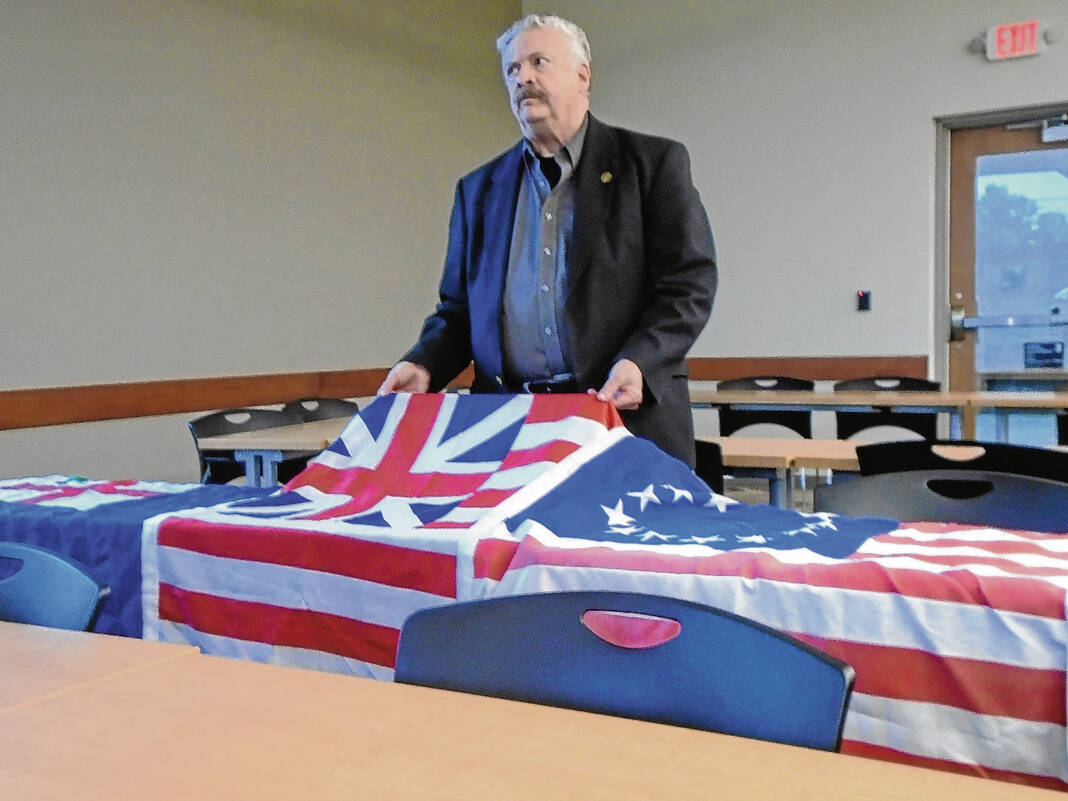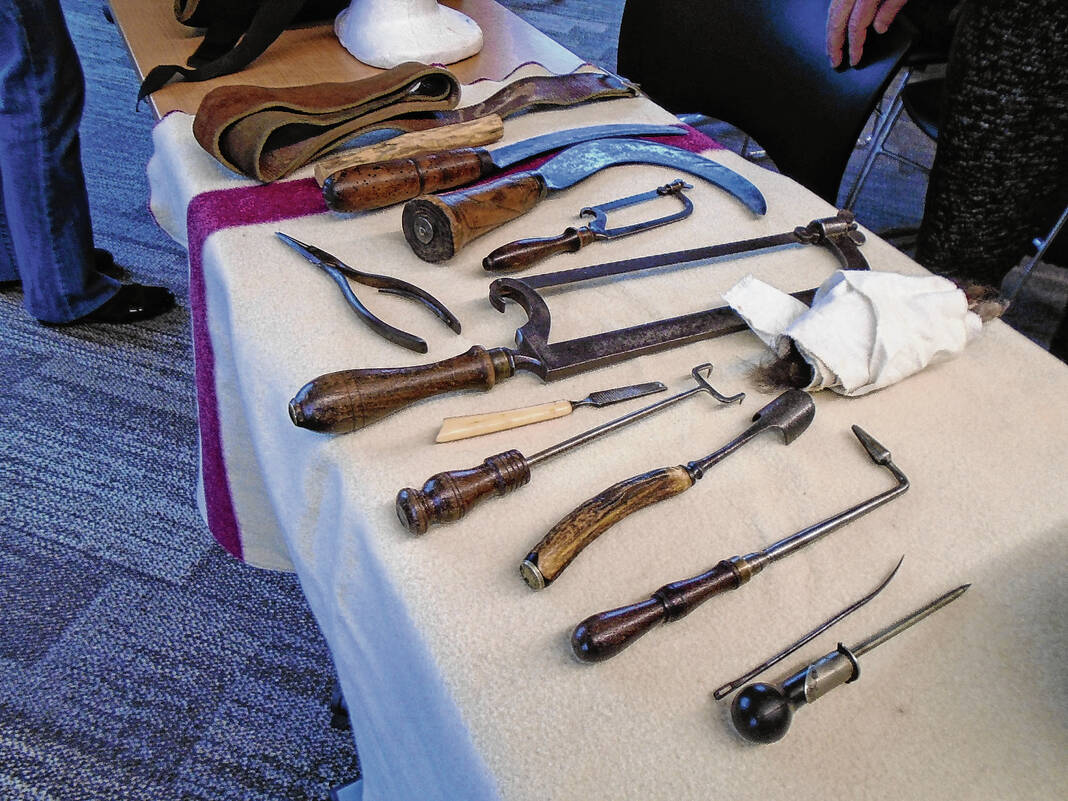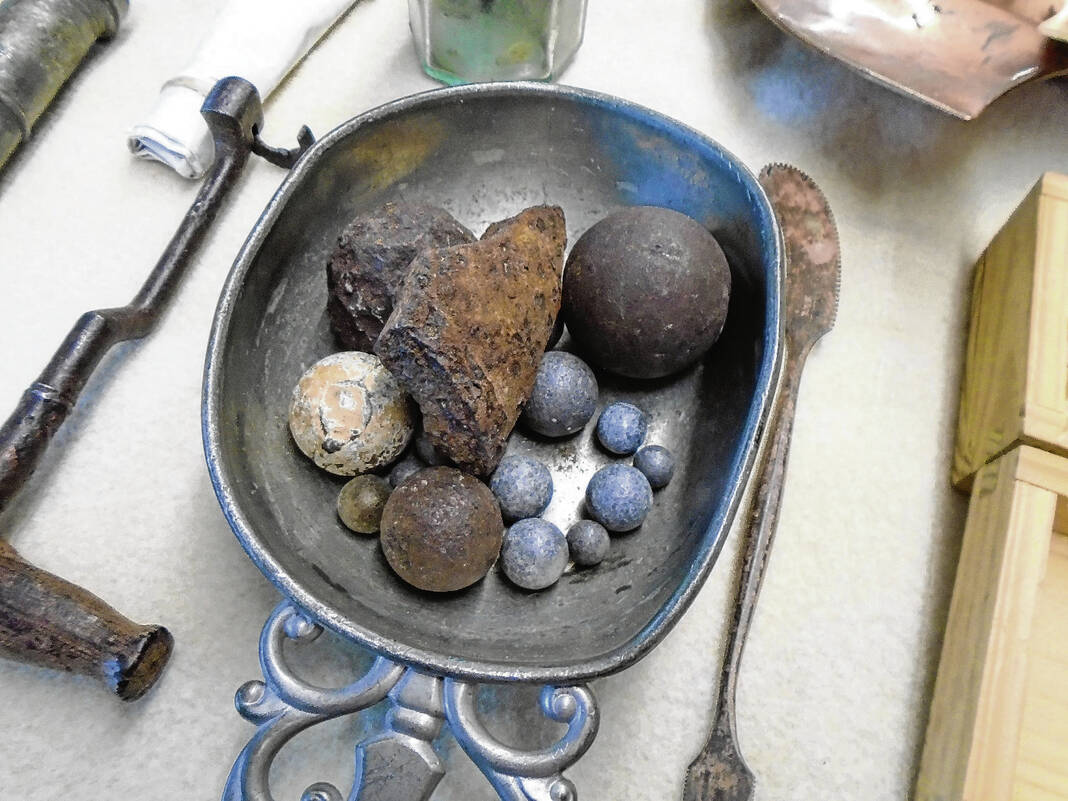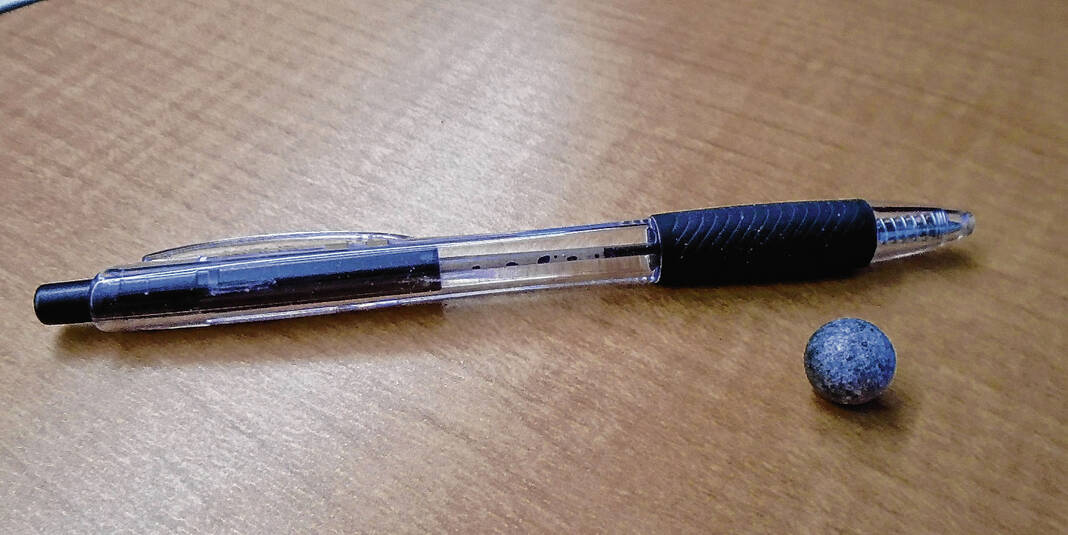
Ed Sachs shows the first flag used in the Revolutionary War. It was soon abandoned because of the British Union Jack in the design.

Surgical tools used by surgeons in the Revolutionary War. Cauterizing irons are in the foreground, and the object wrapped in cloth is the horsehair pack used to cushion the amputation.
Photos by Kay Dawson | The Register-Herald

Samples of the ammunition used in cannons, muskets, and rifles during the Revolutionary War.

Grapeshot next to a pen to indicate the size of the hot lead tearing through tissue and bone.
ENGLEWOOD — “There was no such thing as a minor wound,” Dawn Lechner told the audience at the Northmont Library.
Lechner, a middle-school teacher at Trotwood, is a “living historian,” participating in re-enactments and portraying people of the past in the encampments accompanying the re-enactors. She and Ed Sachs, a retired Air Force Major she met a few years ago at a re-enactment, gave a talk at the library on Jan. 6 about Revolutionary War medicine.
Sachs explained that musket balls usually had a diameter of about one sixth of an inch, and cannons often fired grapeshot, or small bullets with a large collection fired at once.
These projectiles, hot and traveling fast, tore through muscles and bones, flattening on impact and doing great damage. Usually, amputation of a damaged limb was the only recourse.
Sachs showed his collection of medical tools from the period, all but a few authentic. He showed how surgeons would apply a tourniquet and then commence cutting with whichever knife and bone saw were suitable to the size of the limb.
With alcohol the only available anesthetic, assistants held the patient down and he had a stick to bite on. Speed, to counter the shock, was thus essential. Hot irons cauterized blood vessels to stop the bleeding, and a horsehair pack between the bone and the skin cushioned the stump and aided in clotting.
With clothing either loosely handwoven or leather, wounds often became infected, and Sachs showed a trevor, a drain punched into the wound for the pus to drain.
He grinned.
“When we’re teaching this to schoolkids, this is where the 14-year-olds start passing out,” he said.
The patient’s survival increased with the distance of the wound from the heart.
A skull (not real) showed a hole made by trephining, boring a hole to relieve the intracranial pressure or remove a bullet from the brain.
The latter did not usually have good results, but Sachs explained, “The feeling about medicine back then was you needed to do something instead of just letting the patient die.”
He showed “one of the most intense weapons of the war”: a tongue depressor. Recruits were examined with the same depressor, and about 30 percent of them became sick with infections during training.
Doctors in the field sometimes adapted Native American tools and served as their own pharmacists or used native remedies such as willow bark for pain and sumac for sore throats.
Medical treatments and military tactics had not changed much from the time of the Crusaders, with armies facing each other about 50 yards apart. (The Americans introduced guerilla warfare, but, Lechner said, fighting from shelter was considered “ungentlemanly.”) Thus, even muskets with limited range were likely to hit someone.
Lechner said the idea was that “God will decide who lives and dies.” In addition, operations took place in the open when possible for better vision.
She said, “The fact that any survived at all is a miracle.”
Sachs and Lechner also showed some of the clothing worn by soldiers and some of the flags carried during the Revolution.
On Feb. 3, Lechner and Sachs will present a program on African American soldiers in the Revolution, and on March 2 will offer “An Evening with Teddy Roosevelt and his Wife,” focusing on the Spanish-American War. All programs are at 4 p.m. at the Northmont Library, 700 W. National Road, and are free.

